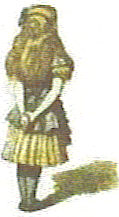Thus RHIC is in a certain sense a string theory testing machine, analyzing the formation and decay of dual black holes, and giving information about the black hole interior.
It is important that you look at the date of this article following, and what has subsequently arisen from "then to now." The title of this post asked a legitimate question and it was answered in response to the disaster scenario's presented to the LHC "recenty?" Check the date on it? Not so recent?
Discovering this raised the conclusiveness about what was comparative to the cosmic ray collisions. This lead us to believe, the microscopic blackhole creation was safe. Becuase it happened all the time in the space above us. Just as we may see the aurora borealis in our observation in the interaction with the sun, so too, in cosmic particle collisions in ways beyond the standard model.
So looking back?
SCIENTISTS ARE OFTEN ACCUSED of trying to play God. But obviously they can't really mimic the feats of the putative Creator of the Universe, and make a universe in the laboratory. Or can they? Before you snort in disbelief, you should know that some serious cosmologists have considered the idea. Indeed, one of them has already had a shot at creating a universe--albeit inside a computer. The idea dates back to the late 1970s, when Andrei Linde, now at Stanford University, and Alan Guth of the Massachusetts Institute of Technology separately came up with the concept of "inflation". According to this idea, an incredibly short, violent burst of expansion occurred around 10-32 seconds after the birth of the Universe. Propelled by concentrated vacuum energy, inflation boosted the size of the Universe from one billionth the width of a proton to the size of a grapefruit. That's what the theorists claim, but showing that inflation really did take place like this is hard... unless, of course, someone can recreate the right conditions in the lab and watch what happens. Linde and his colleagues have already done a dry run on a computer. "Setting up the simulations was hard work, and only on the seventh day did we finish the first series," he reported in Scientific American in 1994, adding in Strangelovian terms: "We looked at the shining screen, and we were happy--we saw that the universe was good!" This isn't enough for Linde: he wants to do it for real. But theory suggests that matter has to be squeezed to densities similar to those in the primordial Universe before such fields appear. No-one has the faintest clue how to create such densities, yet. Linde is sanguine about the dangers involved, if it ever becomes possible. "You can think of our Universe as being like a smooth surface, with one part of it inflating like a balloon. The new universe will be connected to ours by just a tiny passage--what we call a wormhole--the size of a subatomic particle." Quite how we'd know we'd succeeded isn't obvious, but at least there seems little danger of someone tumbling into the new universe by mistake, or anything nasty getting out.
THis one post includes "lots of link"s from the accumulation of my thinkng as a layman. I had gathered these as they unfolded, to help me understand what was introduced to me some time ago by Paul on the question in regards to the "Disaster Scenario at LHC."
Now in regards to "new physics" one needed to see what would come out of such collisions that would be produced, so one had to indeed follow that thinking which I did. How far from the truth of it was what was generated in the public eye distant from what was published by the reputable scientists?
Well you would have to judge for yourself, and "my excuse," well it has been provided for me, so one can say as a layman I am really distant from the current thinking.
So yes before Cosmic Variance and the disaster scenario, it was in our conversations that "Mooreglade of Superstrintheory.com forum" introduced the article of "A Blackhole Ate My Planet" which lead too "Fate of our Planet"
So you see, between then and now, I was able to construct accordingly as I was exposed to the information in regards to "both ways" to which Lubos implies in that statement in comment link?
Okay. Now the stage has been set.
What has been Lubos been saying?
That the connection in "B's question" again sets the stage for further thoughts?
That's just the way of it and who better then student who will make way for further insights, whether it be "Lubos or B?"
In the past my mistake was made to "mirror" Lubos with Peter Woit, because I needed to see what the others may offer in regards to the positions they adopted. Or, another example would have been Smolin and Susskind, who bounced off each other. Or, Gell-mann or Feynman. Or maybe even Plato and Aristotle shhown in the picturte at the top of this Blog?
IN the above case with Peter Woit, I did not learn much? The counter arguments as to why strings were failing in the road to experimental validation(sure we were preoccupied with it's validity then), and how this message was being put out there.
Be sure that more senior people agree with me that it is trivial to falsify that conjecture, including Susskind, Vilenkin, Banks, and others who have looked into it.
So where are we today in regard to strings? Lubo's reference to Banks, Vilenkin, and Susskind already asking these questions is a significant pointer to what has already transpired, and what days, weeks, years, have passed before we see this statement today?
You see how this is done?



 Piglet describes the Heffalump,. in Winnie the Pooh by AA Milne.
Piglet describes the Heffalump,. in Winnie the Pooh by AA Milne.